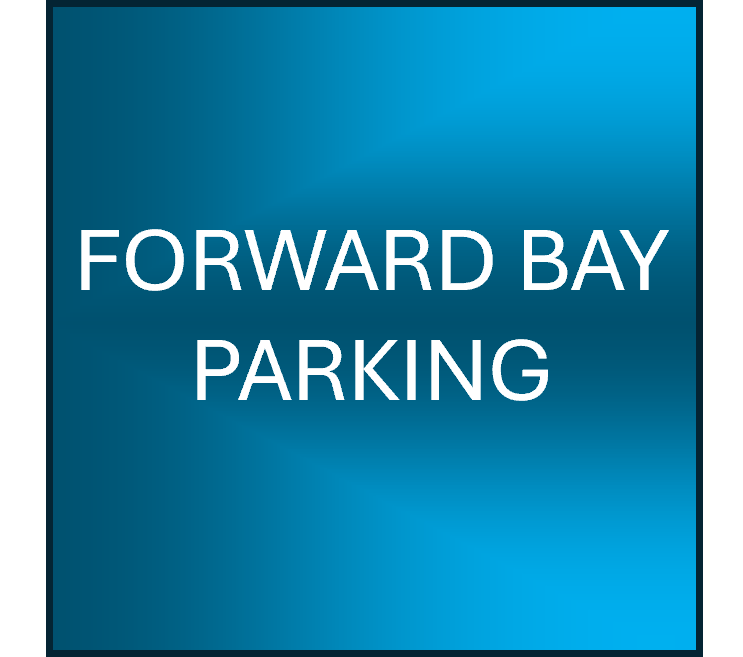
One of two methods to park a car into a parking bay

One of two methods to park a car into a parking bay
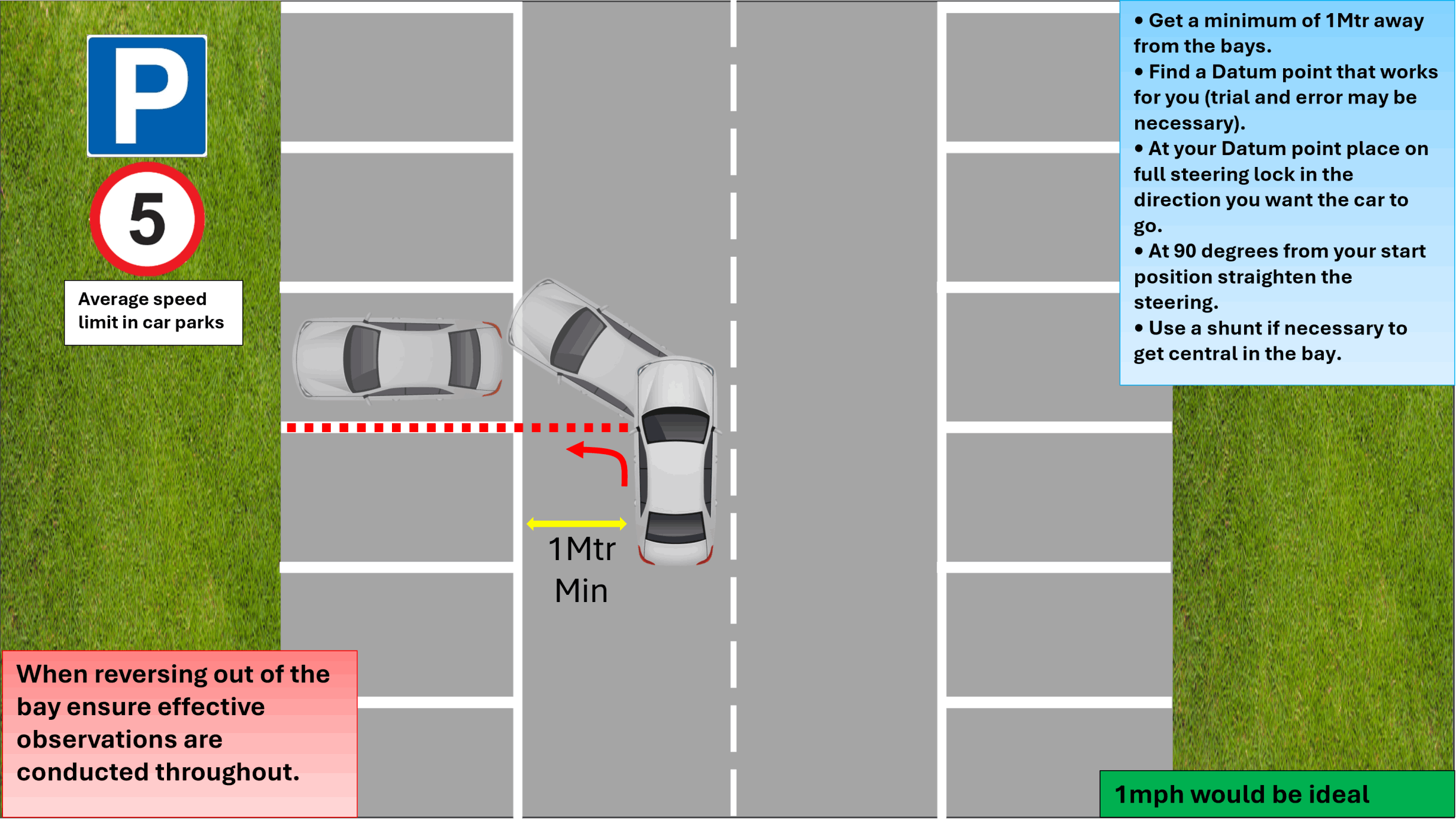
To achieve this, you MUST be at least 1Mtr away from the bay to start the manoeuvre.
1. Enter the car park.
2. Find a bay that suits your parking style. (some prefer parking in between two cars, whereas others prefer to have empty bays to one side or the other of the bay they require, and others will prefer both bays either side of their car to be empty) You will still need to use the MSPSGL routine and use a signal if necessary to inform others that you intend to park.
3. Datum points tend to work well for some learners however they are not important per se, as over time you will naturally find "your spot" for when to turn into a bay. In this particular method, the driver has chosen the door mirrors as their datum point.
4. Once they have lined up the door mirror with the bay line (red dotted line) they bring the car to a stop.
5. At this stage place the steering at full lock in the direction of the bay.
6. Carry out effective observations to ensure there are no other vehicles moving or pedestrians walking around.
7. Slowly (2mph or less would be ideal) drive the car into the bay.
8. As soon as the car is pointing at 90 degrees from the start position, straighten the steering.
9. If the car has not ended up centrally in the bay then you can always reverse out of the bay and straighten it up.
NOTE! if you use a "shunt" to straighten up the car you will usually be marked a Driver fault during your test. If it is just a finesse move they usually do not mark it down.
The general guide is that the car should be within the confines of the white lines. You cannot fail your test for this manoeuvre if the car is positioned as per the 4 pictures below, as long as you have parked the car with good control and effective observations throughout the manoeuvre.
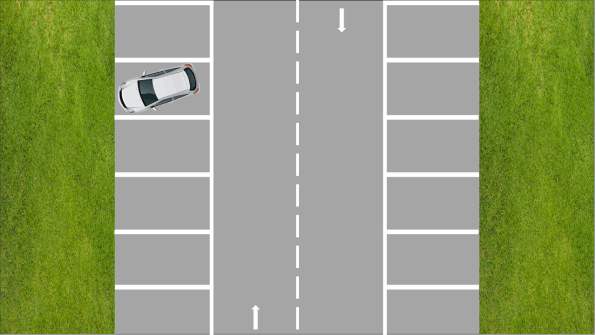
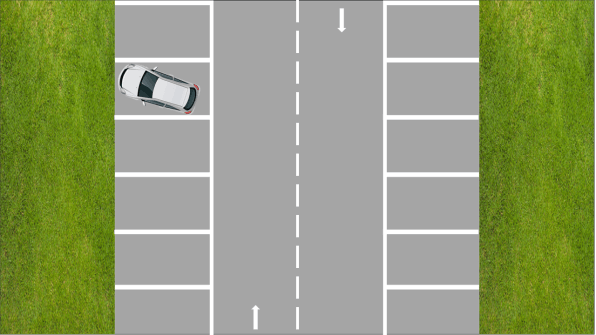
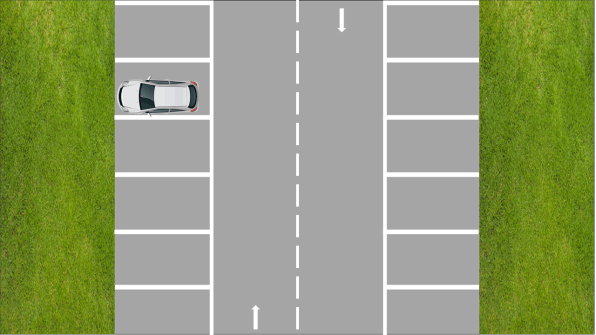
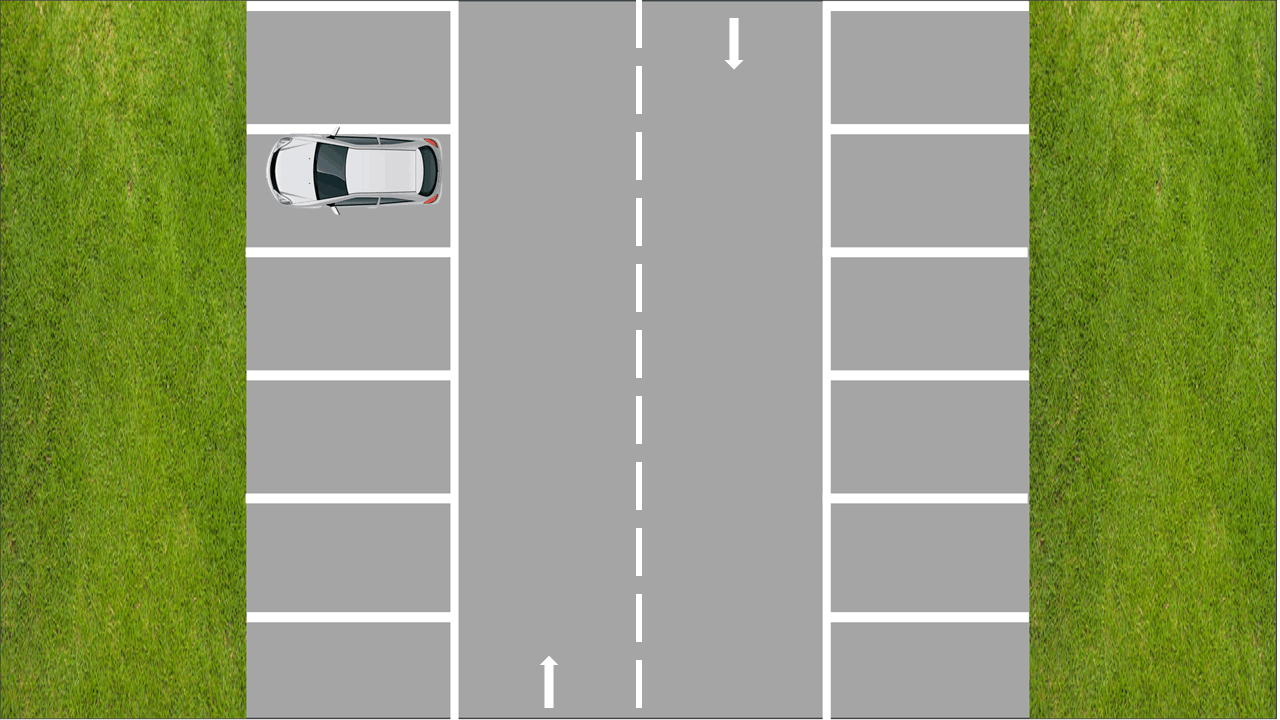
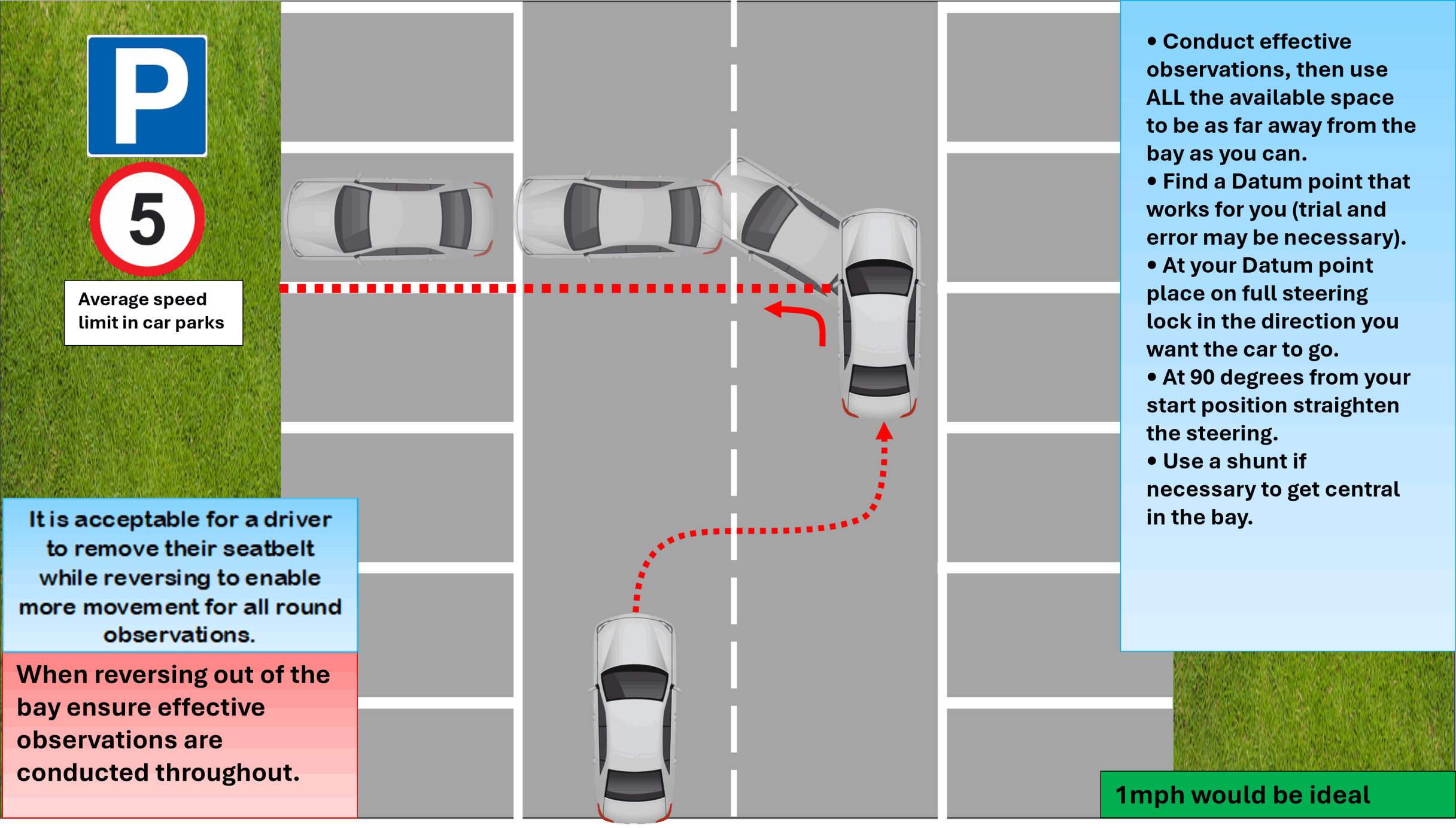
1. Enter the car park.
2. Find a bay that suits your parking style. (some prefer parking in between two cars, whereas others prefer to have empty bays to one side or the other of the bay they require, and others will prefer both bays either side of their car to be empty) You will still need to use the MSPSGL routine and use a signal if necessary to inform others that you intend to park.
3. Datum points tend to work well for some learners however they are not important per se, as over time you will naturally find "your spot" for when to turn into a bay. In this particular method, the driver has chosen the door mirrors again as their datum point.
4. Move to the opposite side of the road to ensure you have the maximum amount of space to perform this manoeuvre. This method tends to be the most popular for forward bay parking
4. Once you have lined up the door mirror with the bay line (red dotted line) then bring the car to a stop.
5. At this stage place the steering at full lock in the direction of the bay.
6. Carry out effective observations to ensure there are no other vehicles moving or pedestrians walking around.
7. Slowly (2mph or less would be ideal) drive the car into the bay.
8. As soon as the car is pointing at 90 degrees from your start position, straighten the steering. The car usually will only have just entered the bay at this stage, so if you are not central to it you will have the length of the bay to be able to get it central.
9. If the car has not ended up centrally in the bay then you can always reverse out of the bay and straighten it up.
NOTE! if you use a "shunt" to straighten up the car you will usually be marked a Driver fault during your test. If it is just a finesse move they usually do not mark it down.
Dry steering is what is known in the industry as turning the steering wheel WITHOUT the wheels rotating.
Both methods as shown above have mentioned bringing the car to a stop and then placing on full lock steering, and then moving into the bay.
This has two benefits initially, and especially when learning to carry out the process of Bay Parking.
1. It allows all the momentum of the car to be taken out of the car.
2. You will notice that once you have found "your" datum point, this method works EVERY TIME!
The basis of these methods are advised for test purposes only as it takes the anxiety out of your test day for the particular manoeuvre.
As your skill and experience grows, you will find that you are more than capable of slowing your speed enough and placing on the steering at the correct point every time and successfully achieve the required result of parking your car.
The problem on test day is that nerves can kick in, and by not stopping, if you have too much speed, or you do not put the steering on at the correct time and at the correct speed, it is highly likely that the manoeuvre will globally go wrong. So stopping and taking your time using a proved method will make test day just that little bit easier.
Now let's explain why over time we want you to NOT dry steer.
Dry steering can cause a multitude of problems over a period of time. Here are just a few of them.
1. Imagine in your head a school pencil with a rubber on the end of it.
if you turned the pencil upside down and placed the rubber onto a sheet of sandpaper and then began to twist the pencil, how long do you think the rubber would last for?
Hopefully your answer was "not very long".
Well now imagine your tyres as the rubber, and the tarmac of the road as the sandpaper. If you keep steering without the wheels rotating, you will eventually wear a flat spot onto your tyres, which in turn will reduce the lifespan of your tyres.
2. On a hot summer's day, tarmac can become very soft.
If you were to "dry steer" on a hot Tarmac it is very likely that you will cause the membrane of the Tarmac to be broken. The membrane is sort of what is created after a roller has gone over the Tarmac once it has been laid, to seal the Tarmac. If you break that seal, water will settle in it and when we get freezing temperatures the Tarmac cracks. This in turn is the start of the next pothole!
3. Dry steering is not good for your steering rack as it put extra stress on the power steering pump/motor.
4. Dry steering can damage track rod ends, wheel bearings, shock absorbers and other items that may have connection to your wheels.
Just generally, Dry steering might help you out of a tricky situation such as a tight road and needing to turn the car around in the least amount of movements as possible, but we want you to get good at bay parking over time so that the necessity to dry steer to park should not ne necessary.